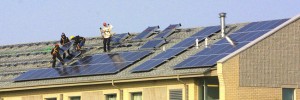 The M&M Building opened for business in 1992. See TechAlum Newsletter, “The Class of 1992,” Vol. 18, No. 25, 2012.
The M&M Building opened for business in 1992. See TechAlum Newsletter, “The Class of 1992,” Vol. 18, No. 25, 2012.
MSE Seminar
Friday, August 3, 2012
10:00 am – 11:00 am
Room 610, M&M Building
Yang Ren
X-ray Science Division
Advanced Photon Source
Argonne National Laboratory
Abstract
The Advanced Photons Source (APS) is a national synchrotron x-ray user facility for the cutting-edge research in the fields of both fundamental and applied science and technology. The availability of high-brilliance high-energy x-rays generated at the APS has significantly advanced the field of materials research, especially for in-situ studies in real-conditions. In this talk, we will give a general introduction of the APS and then focus on applications of synchrotron high-energy x-rays for in-situ structural characterization of energy materials in bulk forms or nanoscale phases under complex sample environments (e.g., low/high temperature, pressure/stress and magnetic/electric fields). Technical details and scientific research opportunities with synchrotron high-energy x-rays will be presented, together with some recent results in different research areas, ranging from correlated electron systems to advanced battery materials to functional alloys. (Use of the Advanced Photon Source was supported by the U.S. Department of Energy, Office of Science, Office of Basic Energy Sciences, under Contract No. DE-AC02-06CH11357.)
Bio: Dr. Yang Ren is a physicist at Argonne National Laboratory. He received his M.S. in condensed matter physics from the Institute of Physics, Chinese Academy of Science in 1988, and his Ph.D. in chemical physics from the University of Groningen, The Netherlands in 1996. He is currently a beamline scientist for a high-energy x-rays beamline at the Advanced Photon Source.
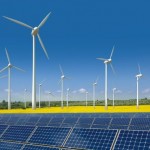
More than a dozen Michigan Tech faculty members and researchers have gone on the record in support of a ballot initiative designed to give a big boost to the state’s renewable energy industry. If passed by the voters in November, the initiative would require that 25 percent of Michigan’s electricity be generated using renewable energy sources by the year 2025. A July 19 letter released by the Union of Concerned Scientists supporting the measure garnered more than 140 signatures from scientists and academics throughout the state, including 15 from Michigan Tech. Among the signers is associate professor Joshua Pearce.
Michigan Tech Faculty, Researchers Endorse Michigan’s 25% by 2025 Renewable Energy Initiative
Read more at Michigan Tech News, by Marcia Goodrich.
Research Assistant Professor Pasi Lautala (CEE/MTTI) and CoPIs Assistant Professor John Hill (ME-EM) and Assistant Professor Paul Sanders (MSE) have received $400,000 from the University of Illinois at Urbana-Champaign for a two-year project, “National University Rail Transportation and Education Center (NURail).”
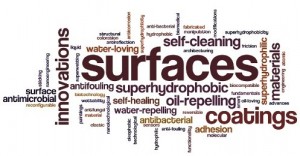
Jaroslaw (Jarek) Drelich has been named the Editor-in-Chief of a new journal entitled Surface Innovations to be launched in February 2013 by ICE Publishing. Surface Innovations is an interdisciplinary and international journal that will publish articles on scientific and engineering advances made in formulation and modification of surfaces and coatings. Superhydrophobicity, superhydrophlicity, self-cleaning, self-healing, anti-fouling, anti-bacterial, etc., have become important fundamental topics of surface science research community driven by curiosity of physics, chemistry, and biology of interaction phenomenon at surfaces and their enormous potential in practical applications. Materials having controlled-functionality surfaces and coatings are important to the manufacturing of new products for environmental control, liquid manipulation, nanotechnological advances, biomedical engineering, pharmacy, biotechnology, and many others, and are part of the most promising technological innovations of the 21st century.
Drelich to Edit New Journal on Surfaces and Coatings
“Controlled-functionality surfaces and coatings may lead to some of the most promising technological innovations of the 21st century,” Drelich said. “Areas of particular interest are environmental control, liquid manipulation, nanotech devices, biomedical engineering, pharmacology and biotechnology.”
Read more at Tech Today.
The research of professor Joshua Pearce (MSE/ECE) on solar photovoltaic thermal hybrid systems is featured in the press and on radio and television, including the Whig Standard, Materials Today, KROCK1057, CKNW and TV CKWS.
As well, his work appeared on numerous online green-energy news sites.
Here’s a Tiny Solar-Thermal System for Your Tiny House
Lead researcher Joshua Pearce focused on thin-film silicon technology, which is far cheaper than conventional solar cells based on crystalline silicon. For rooftop applications, it also has a weight advantage.
Read more at Clean Technica, by Tina Casey.
Hybrid Solar Electric/Solar Thermal Panels Could Make Rooftop Solar Mainstream
You don’t have to cool down thin-film silicon to make it work. In fact, Pearce’s group discovered that by heating it to solar-thermal operating temperatures, near the boiling point of water, they could make thicker cells that largely overcame the Staebler-Wronski effect. When they applied the thin-film silicon directly to a solar thermal energy collector, they also found that by spike annealing (baking the cell once a day), they boosted the solar cell’s electrical efficiency by over 10 percent.
Read more at Treehugger, by Sami Grover.
Queen’s researchers make solar panel breakthrough
Stephen Harrison and Joshua Pearce of the University’s mechanical and materials engineering department developed a form of solar panel material that can generate both electricity and heat.
Read more at The Kingston Whig-Standard, by Elliot Ferguson.
Photovoltaic thermal power
“These studies open up an entirely new application of amorphous silicon and make a highly-economic PVT possible,” says Dr. Pearce. “We need both solar electricity and solar heating in Canada but we are running into ‘roof real estate’ issues. Now people can have both their solar electricity and solar heating combined in a nice tidy package.”
Read more at Materials Today.
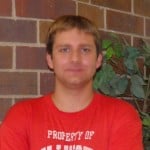
MSE graduate student Joseph Licavoli has been awarded a $4000 scholarship from the H. H. Harris Foundation for the 2012-13 school year. The award is in support of those who have proven through professional and academic pursuits, a professional and/or academic interest in metallurgy and cast metals as well as outstanding academic performance. Licavoli provided a statement about his goals in metallurgy and a sketch of his experiences. He is working with Dr. Paul Sanders.
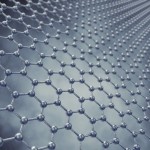
CleanTechnica, a clean technology news website, published an article about the research of Associate Professor Yun Hang Hu on using graphene, a two-dimensional honeycomb of carbon atoms, to improve the efficiency of solar panels.
“The excellent electrical conductivity of graphene sheets allows them to act as bridges, accelerating electron transfer from the titanium dioxide to the photoelectrode,” said Hu.
See “Next-Gen Solar Cells Receive Efficiency Boost from Graphene.”
Michigan Tech scientists find a clean source of energy
“Carbon dioxide is very stable so normally it’s very typical to convert carbon dioxide to another useful compound. We found a way to convert carbon dioxide into carbon nitride with energy release,” said Yun Hang Hu, Michigan Tech professor.
“The single biggest contribution to carbon dioxide into the atmosphere is power plants. We get electricity from a power plant by burning coal,” Hang Hu said.
Read more at Upper Michigans Source, by Gabrielle Mays.
Thomas Spence, Met. Eng. ’70, talks about Fastpitch Softball in 1969 and 1970. See TechAlum Newsletter, From the Email Bag, “Fastpitch Softball,” Vol. 18, No. 23, July 3, 2012.
Assistant Professor Durdu Guney (ECE/IMP) and CoPIs Associate Professor Joshua Pearce (MSE/IMP) and Associate Professor Paul Bergstrom (ECE/IMP) have received $299,631 from NSF for a three-year project, “Increasing Solar Energy Conversion Efficiency in Hydrogenated Amorphous Silicon Photovoltaic Devices with Plasmonic Perfect Meta-Absorbers.“
